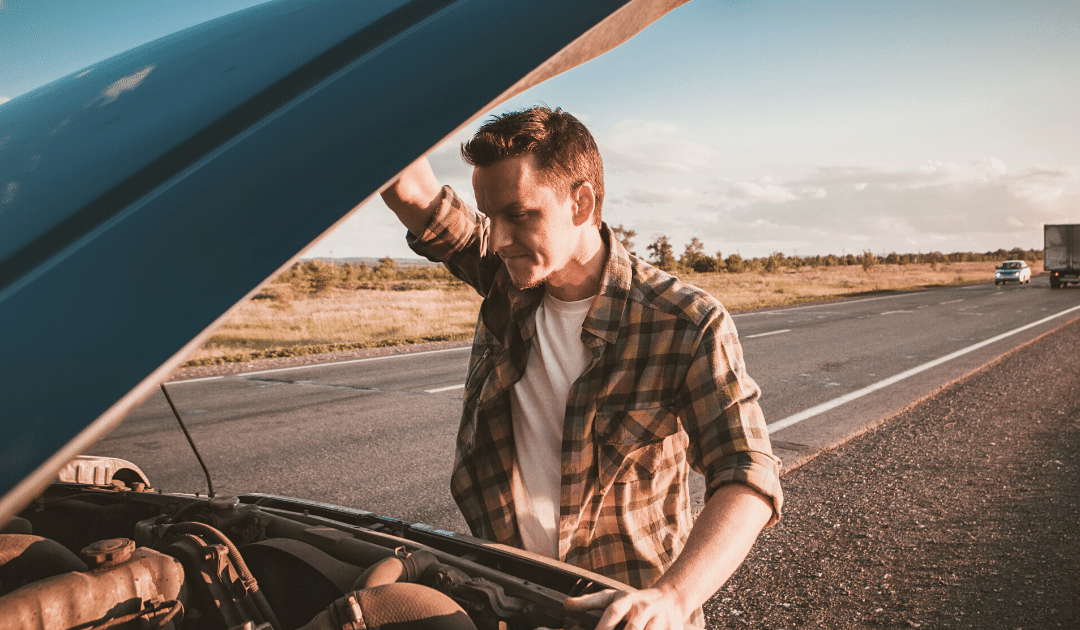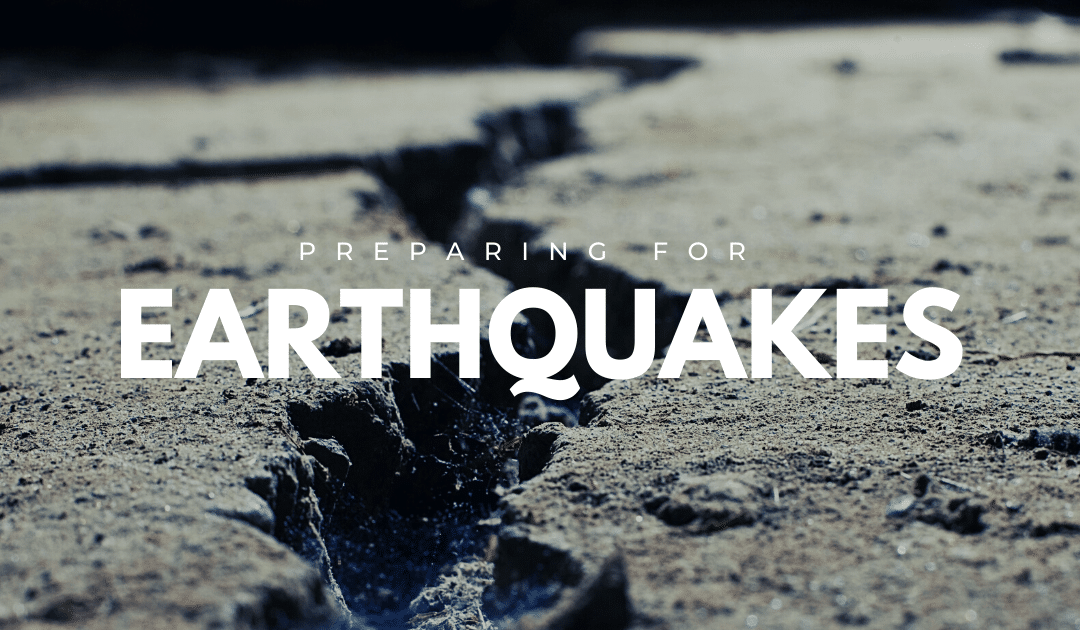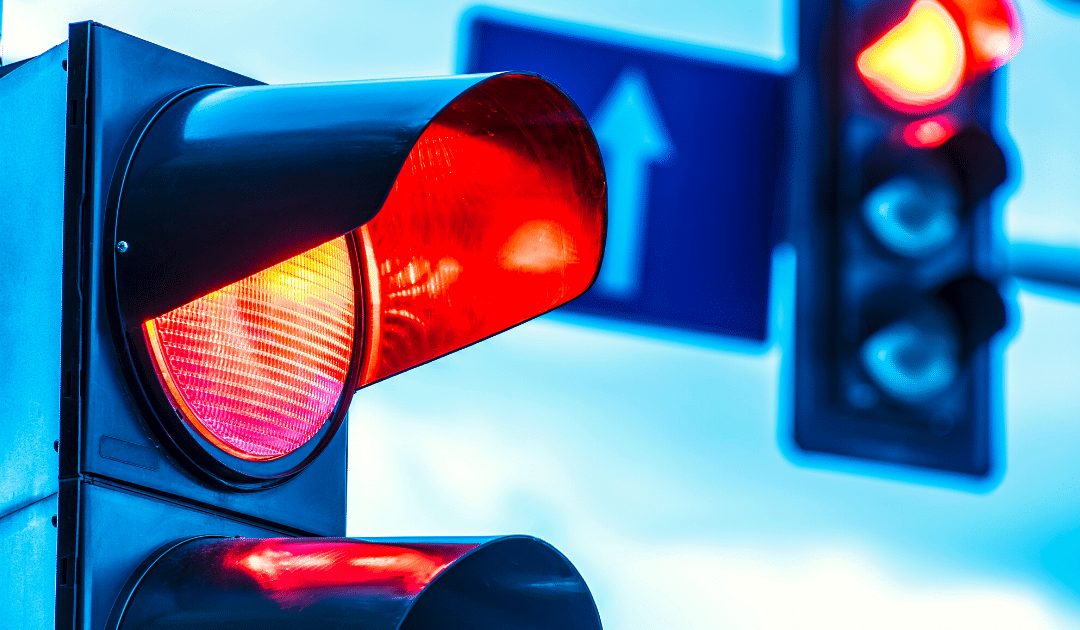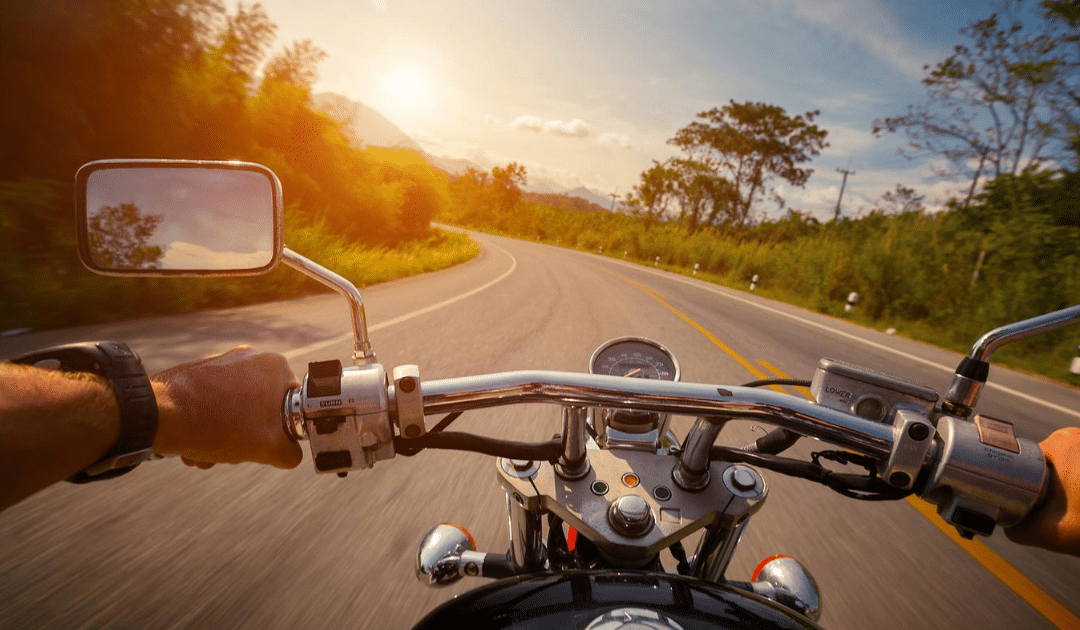
by California Casualty | Auto Insurance Info |
Routine keep up and maintenance will prevent breakdowns and help keep your car in good working condition for years, but when you put off signs of trouble or little things like appointments to get your oil changed, you risk a break down every time you get behind the wheel.
Not taking care of your vehicle can also cause major internal damage which could end up costing you thousands of dollars in repairs.
Yahoo has created a list based on a survey given to mechanics on The Ten Worst Things You Can Do to Your Car. Here were the results.
1. Putting off routine maintenance – This includes: checking your battery and brakes, aligning your tires, getting your oil changed, etc.
2. Ignoring the check engine light – The check engine light is the generic indicator that something is wrong with your vehicle and you should take it to a licensed mechanic.
3. Not changing the oil – When you don’t change your oil it can cause poor engine performance or even complete engine failure.
4. Failing to check tire pressure – Even with new tires, you will lose about one PSI every month. Poorly or overinflated tires could lead to a blowout and/or accident. You should continue to check and fill them monthly as needed.
5. Ignoring transmission, brake, coolant, and other fluid services – These fluids all play a part in making sure your vehicle is functioning properly.
6. Continuing to drive an overheated vehicle – This can easily lead to an engine fire and completely total your vehicle and/or cause series injuries to the driver.
7. Not changing fuel and air filters – Not changing these filters will degrade your vehicle’s performance and cause wear and tear on the engine.
8. Having someone unqualified service the vehicle – Don’t fall victim to cheap parts and faulty repairs. Look at reviews and make sure your mechanic or repair shop is properly licensed.
9. Using generic aftermarket parts and not manufacturer quality parts – When you use generic parts, you do not know if they have been properly inspected. This could lead to more issues in the future.
10. Trying to service your own vehicle – Although you may know how to do a few things yourself, when you take your vehicle to a professional, you can receive a full service and they will inspect and make sure everything in your vehicle is functioning properly and suggest needed maintenance/repairs.
Are you guilty of any? If so, it’s probably time to take your car to the mechanic before it’s too late.
Make sure your vehicle is covered, under the hood and on the road. Speak with a California Casualty representative today to review your auto policy so you can have peace of mind the next time you get behind the wheel. Click here or call 1.800.800.9410.
This article is furnished by California Casualty, providing auto and home insurance to educators, law enforcement officers, firefighters, and nurses. Get a quote at 1.866.704.8614 or www.calcas.com.

by California Casualty | In Your Community |
Our streets and freeways are coming back to life after having been empty for months. And right now, we are at the end of the season known as the “100 Deadliest Days” for teenage drivers (Memorial Day through Labor Day). Add to that the excitement of back-to-school and socializing with friends beyond the virtual connections enforced by stay-at-home orders. It’s the perfect storm for poor decision making and inattentive driving by many 16 to 19-year-olds.
While COVID-19 poses a threat to our communities, teenagers are nearly four times more likely to die in a car crash than from the virus.
One of the biggest contributors to this “other” growing pandemic is distracted driving. Distracted driving is anything that takes a driver’s eyes off the road, hands off the wheel, mind off driving, or keeps ears from being alert to surroundings.
Did you know that reckless and distracted driving is the number one killer of young people?
Recognizing the need to proactively address these 100 percent preventable crashes – mistakenly called accidents – Impact Teen Drivers (ITD) launched a Create Real Impact Creative Contest. The contest hinges on the idea that needless teen deaths can be avoided if young people are given a platform to – in their own words – urge their peers to adopt safer driving attitudes and avoid the tragic result of bad choices behind the wheel. This year’s Fall Create Real Impact Contest gives educators and students a chance to win their share of $27,000.
Here’s How it Works:
Students, ages 14-22, can submit one entry into one of the four categories — creative writing, video, graphic design, or music — to showcase their original idea for a solution or strategy to end reckless and distracted driving.
Individual Prizes are awarded in a variety of ways:
- $500 to the entry with the most online votes within each category
- $1,500 to the grand prize winner in each category (as determined by CRI judges*)
- $1,500 for a Spanish language award within the video or graphic design category
*Judges will determine the Grand Prize Winners based on the following criteria: 25% concept/creativity, 25% execution of the idea, and 50% effectiveness of the message. Online voting in no way influences the decisions of the panel of judges.
In addition to the individual student winners, high school teachers and advisors are invited to submit a distracted driving social media campaign developed and implemented by their student leaders. The High School Distracted Driving Social Media Campaign contest gives students the chance to develop critical thinking and rational problem-solving skills through conducting research, advancing technical and creative writing skills, and developing communication with peers and community members across multiple media.
Projects can be developed through distance learning or in-person.
The social media campaign prizes are as follows:
- $10,000 for the first place winner
- $5,000 for second place
- $2,500 for third
Important Dates:
- Contest Opens: Monday, August 24, 2020, at 8:00 a.m. (PT)
- Contest Entry Deadline: Thursday, November 12, 2020 at 4:00 p.m. (PT)
- Online Voting Begins: Friday, November 13, 2020 at 8:00 a.m. (PT)
- Online Voting Closes: Thursday, November 19, 2020 at 4:00 p.m. (PT)
- Grand Prize Winners and Top Online Vote Getter Winners will be announced by the week of November 23-27, 2020
No one understands teens the way their peers do. By leveraging their creativity to spread resonant messaging on safer driving and better decision-making behind the wheel, young people can be a powerful force in reducing needless teen deaths.

by California Casualty | Homeowners Insurance Info, Safety |
Chances are good that if an earthquake hits, you’ll be at home — especially now, when many of us are working at home due to coronavirus.
Luckily, there are simple things you can do today to safeguard your home and better protect yourself and your family before an earthquake strikes. Start with our 12 to-dos below. You’ll also find 3 top tips for what to do during a quake and, just as importantly, what not to do.
Inside Your Home
Whether it’s the kind that rolls in waves or arrives with a sudden jolt, an earthquake will surely shake your home and its contents. More people are injured by falling objects or furniture than by building damage. Make your home safer by securing and moving furniture and accessories, especially where people sit, sleep, or spend a lot of time. Pay special attention to heavy objects: move them lower to ground level and also make sure they’re not close to escape routes or doorways. Here are 12 other items to check and secure:
-
- Bookshelves – Tall bookshelves are an accident waiting to happen, as they’re unstable to begin with, and their contents can easily become airborne. Secure them to a wall stud using L-brackets and place the heaviest items on bottom shelves.
- Chemicals – If you have chemicals stored on open shelves in the garage or basement, protect them against spills by installing wood, plexiglass strips or wires to restrain them. If containers are behind cabinet doors, use latches to secure the doors.
- Display Cases – Secure these to the floor using appropriate brackets. Install safety glass if possible. Try to secure shelves inside the case as well.
- Electronics – For large electronics such as flat-screen TVs and entertainment centers, buy a “safety strap” kit, which contains straps and buckles designed for these heavy electronics.
- Hanging Objects – These are especially prone to be thrown around in a quake. Framed pictures and mirrors should be hung from closed hooks so they can’t bounce off walls. You can also use earthquake putty to secure corners. Move medium or large-sized pieces so they’re hung on studs, which is more secure being hung on drywall only. Make sure any hanging plants are well away from windows.
- HVAC Units – Anchor units using restraint brackets or seismic snubbers.
- Kitchen Cabinets – Shaking can cause cabinet doors to fly open and throw contents onto the floor. This can lead to a floor full of glass and ceramic shards – not to mention damage to countertops and walls. Secure cabinets by installing one or more of several latches: hook and eye, standard latch, pull/throwover, push latches, child-proof, or seismolatch.
- Piping – Secure all overhead pipes using brackets.
- Refrigerator – Secure refrigerators and other major appliances to wall studs using earthquake appliance straps.
- Space Heaters – These should be equipped with support legs and properly spaced angles. Learn online to DIY or hire a professional.
- Suspended AC Units – These should be braced with angles or welded to a support rod.
- Water Heater – Proper fastening involves having 2 straps that wrap completely around the unit and are screwed into studs of the wall.
What to Do During a Quake
The more you move or try to run during an earthquake, the greater chance you’ll be injured by falling or flying objects. Instead, remember to:
1. Drop to hands and knees – Do this before the earthquake knocks you down. It protects you from being thrown down and allows you to move if you need to.
2. Cover your head and neck – Get under a sturdy table or desk as soon as you can. If you can’t get to one, get next to low-lying furniture that won’t fall on you or next to an interior wall. Wherever you end up, cover your head and neck for protection.
3. Hold on to your shelter – Hold on to the table or desk (or your head and neck) until the shaking stops. If you’re under a table, be ready for it to shift as the quake rolls – and move with it.
What NOT to Do
1. Run outside – A building’s exterior walls are the most dangerous place to be during a quake. Facades, windows, and architectural details are often first to collapse or break. If you’re inside, don’t run outside, and if you’re outside, don’t run inside – crossing the building exterior puts you at risk of being injured by falling debris.
2. Stand in a doorway – It’s a long-held idea that a doorframe is the safest place to be. In modern homes, a doorframe is no safer than any other part of the house and won’t protect you from airborne or falling objects. You’re safer under a sturdy table.
3. Get in the “triangle of life” – An email that’s gone viral in the last few years offers advice counter to the long-established “Drop, Cover and Hold On” advice. The actions outlined have been discredited as potentially life-threatening by experts and their organizations.
Earthquake safety really boils down to preparation. Although you can’t control where you’ll be when one hits, you can prepare yourself and your home starting right now. Between the tips above – and our articles on what to do before and after a quake and emergency kit basics – you’ll be well on your way to pro-level preparation.
This article is furnished by California Casualty, providing auto and home insurance to educators, law enforcement officers, firefighters, and nurses. Get a quote at 1.866.704.8614 or www.calcas.com.

by California Casualty | Auto Insurance Info, Safety |
While there may be fewer people on the road these days, there is an increase in reckless and dangerous driving, resulting in more accidents — and sadly, fatalities.
Even for the best driver, intersections are some of the most dangerous places on the road. It’s really no surprise, though, given all the commotion concentrated in a small space: vehicles crossing each other’s paths, signals, signs, honking, merging lanes, pedestrians and bicyclists. Add in the all-too-common confusion many drivers experience around right-of-way, and you have a recipe for a fender bender or worse.
By brushing up on the traffic rules for intersections, you can feel more confident in safely maneuvering them. Here are some simple right-of-way reminders, listed by intersection type.
A Four-Way Stop
This is the most common type of intersection, where two roadways cross each other.
-
- Yield to drivers who’ve arrived before you. The first car to arrive always receives the right of way.
- If you arrive at the same time as another driver, the one who’s farthest to the right gets the right of way.
- If three vehicles arrive at the same time, the rule of “right-most has the right of way” still holds, and the car farthest left goes last.
Intersection Without a STOP or YIELD Sign
Known as an “uncontrolled” intersection due to lack of signs or signals, these often trip people up.
-
- Yield to drivers already in the intersection or those who’ve arrived before you.
- If you arrive at the same time as another, the right-most vehicle has the right of way.
A T-junction (Three-Way Intersection)
This is where a minor road dead-ends into a major roadway.
-
- Vehicles on the major road (the through road) always have the right of way.
- If you’re entering from the minor roadway, you must come to a complete stop and yield to drivers on the through road, no matter which way you’ll be turning.
A Traffic Circle
Also called a roundabout, this is an intersection of four or more roadways that converge into a single road that flows in one direction around a center island.
-
- When approaching the circle, always slow and yield to the vehicles in the traffic circle.
- Merge by turning right so that you’re driving around the circle in a counterclockwise direction.
- Turn right to exit the circle when you reach your roadway.
- Do not stop in the roundabout – a steady flow and speed is critical to safety.
U-Turns or Left Turns Onto Two-way Roads
-
- You’re basically last in line: Don’t turn until you yield to oncoming cars, motorcyclists, bicyclists, and pedestrians.
- Keep in mind that both of these turns carry extra risk, so remember safety first, always.
Besides employing the rules above, remember to always slow down and pay attention when approaching intersections. This is a winning combo for smoothly navigating any intersection and getting to where you’re going safely.
This article is furnished by California Casualty, providing auto and home insurance to educators, law enforcement officers, firefighters, and nurses. Get a quote at 1.866.704.8614 or www.calcas.com.

by California Casualty | Auto Insurance Info, Safety |
Late summer riding beckons; open roads, open skies, long days, and beautiful sunsets. The flipside? Extreme heat. And also a transition period of reacquainting yourself with the roads and traffic. Use these tips to keep your bike and yourself cool and safe.
For Your Bike
Keeping your ride cool and running smoothly through the summer usually entails a little extra maintenance. Here are some of the priority areas to fitness-check before setting out.
- Tires – Tire blowouts are usually caused by underinflated, rather than overinflated, tires. Make sure to inflate to the manufacturer’s recommended PSI. And remember that high external temps cause tire pressure to increase due to expanding gas. Check them each week and adjust as necessary. Also keep an eye on the tires’ condition, looking for any cracks, punctures, bulges, or worn tread.
- Fluids – Check oil, brake, coolant, hydraulic fluids, and their reservoirs for debris, condensation, and discoloration or changed consistency. Get them changed if they’re due. Check the water pump and hoses regularly for leaks, cracks, and tears. Pro tip: cover your radiator to keep the engine cool (and protect it from dirt, bugs and UV rays). On the hottest days, avoid stationary idling to prevent engine overheating.
- Gas tank – If your bike has been sitting all winter with fuel in the tank, it might not start up. Drain the tank — if there’s any brown grit in the fuel, your tank has probably rusted. You can take it to a mechanic or DIY by flushing with acid remover. After cleaning, treat the new gasoline with a fuel stabilizer.
- Electrical connections – If your electrical connections aren’t secure, the moisture from humid environments can short the connection and stop your bike from functioning. Inspect all wires and connections to components (including battery) and fasten any loose ones. If they’re corroded, it’s best to replace them.
For You
Riding in extreme heat can increase your chance of health risks, overheating, and accident risk. Follow these tips to stay safe and comfortable.
- Hydration – Staying hydrated is one of the best preventive measures for summer riding. Drink water at every stop and consider purchasing a CamelBak for extended rides. Avoid alcohol, as it can easily dehydrate you.
- Sun safety – Even if it’s overcast, you’re still getting hit by UV rays. Wear sunscreen and reapply to exposed skin as often as possible.
- Clothing – Safe riding means extra layers, even in the summer heat. Here are some hacks to keep you cool in your gear.
- Form-fitting sportswear can keep your body temperature down – look for moisture-wicking fabric.
- A lightweight base layer under your jacket and pants can prevent discomfort and keep you dry.
- When leather pants are too hot, check out specialized jeans that have Kevlar fabric lining and other safety components. Never wear shorts.
- Opt for ventilated summer-weight boots, which allow airflow to cool the feet and ankles.
- Mesh-backed gloves will let you grip the handles while allowing for ventilation – as well as hand protection in case of a fall or skid.
- There are options for jackets that protect while keeping you comfortable in the heat. Ventilated jackets with mesh panels allow for aeration, and many perforated leather jackets come with zip vents, which help you release body heat.
- A proper helmet – required by law in all but 3 states – is safety rule number one. Investing in a breathable, lightweight and ventilated helmet will keep your head (and by extension, your body) cool and protected. The best ones are usually carbon fiber.
Get Re-Accustomed to the Road
If you’ve been traveling mostly by car and are just getting back to the roads on 2 wheels, give yourself some time to re-adjust. You no longer have the wrap-around metal protection of a vehicle, and you may need to fine-tune your reaction time for sharing the road with cars.
Most motorcycle accidents are attributed to unsafe lane changes, car doors, speeding, sudden stops, left-turn accidents, and lane splitting, among others, so make sure you’re visible to the cars around you.
Finally, know the signs of heat stress (check out our article here). It can come on suddenly, so knowledge and prevention are your tools to stay cool and healthy.
This article is furnished by California Casualty, providing auto and home insurance to educators, law enforcement officers, firefighters, and nurses. Get a quote at 1.866.704.8614 or www.calcas.com.





